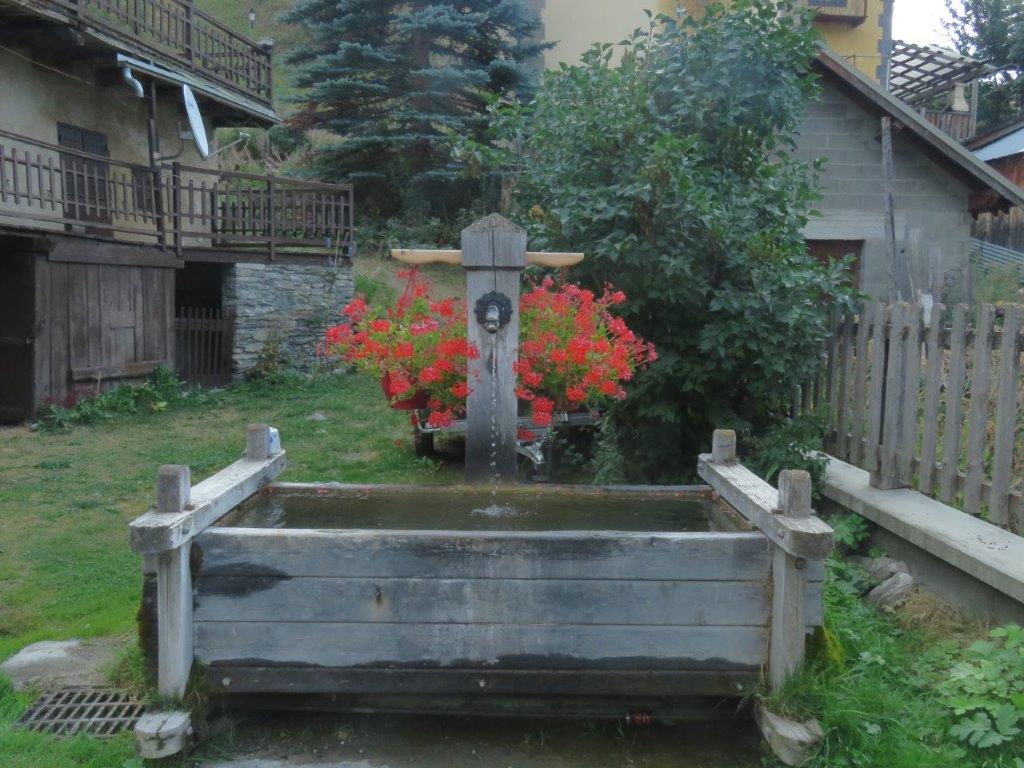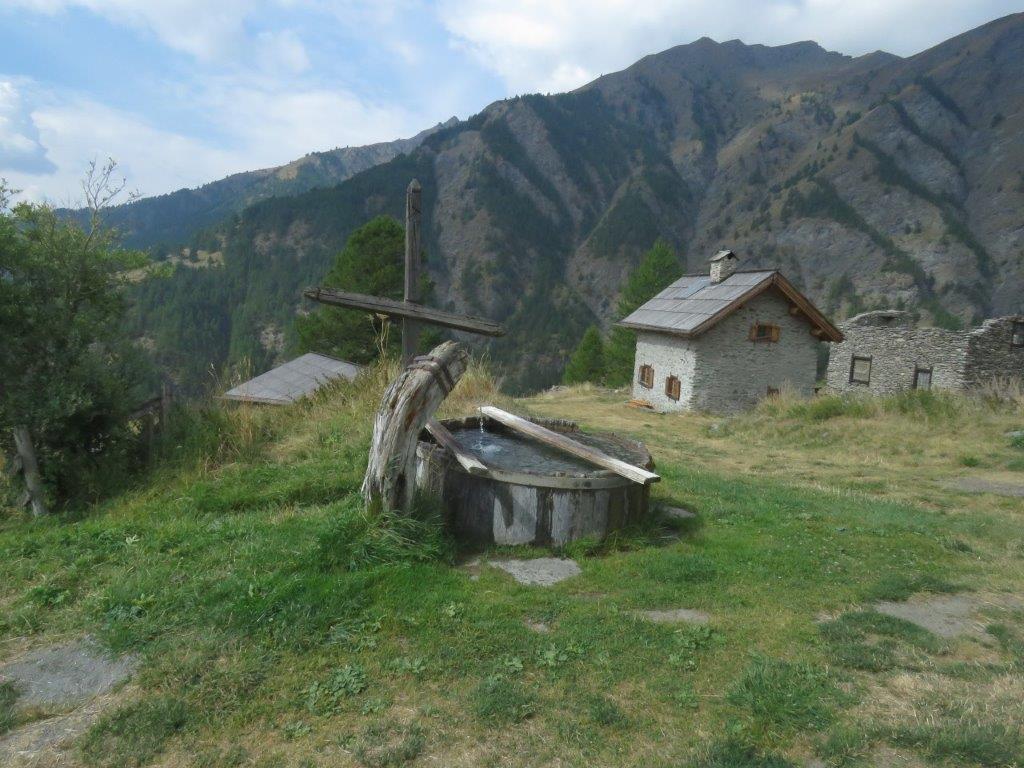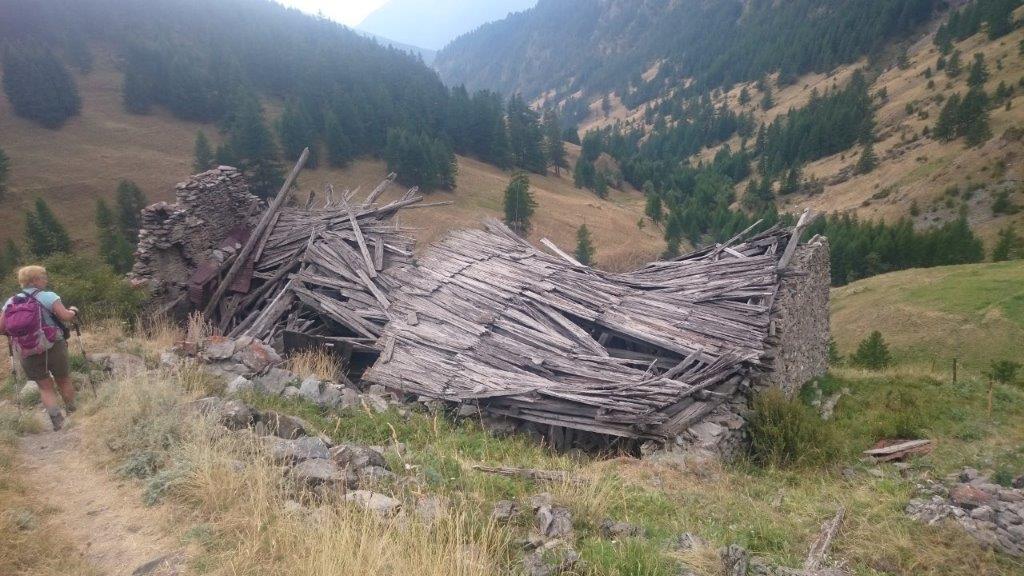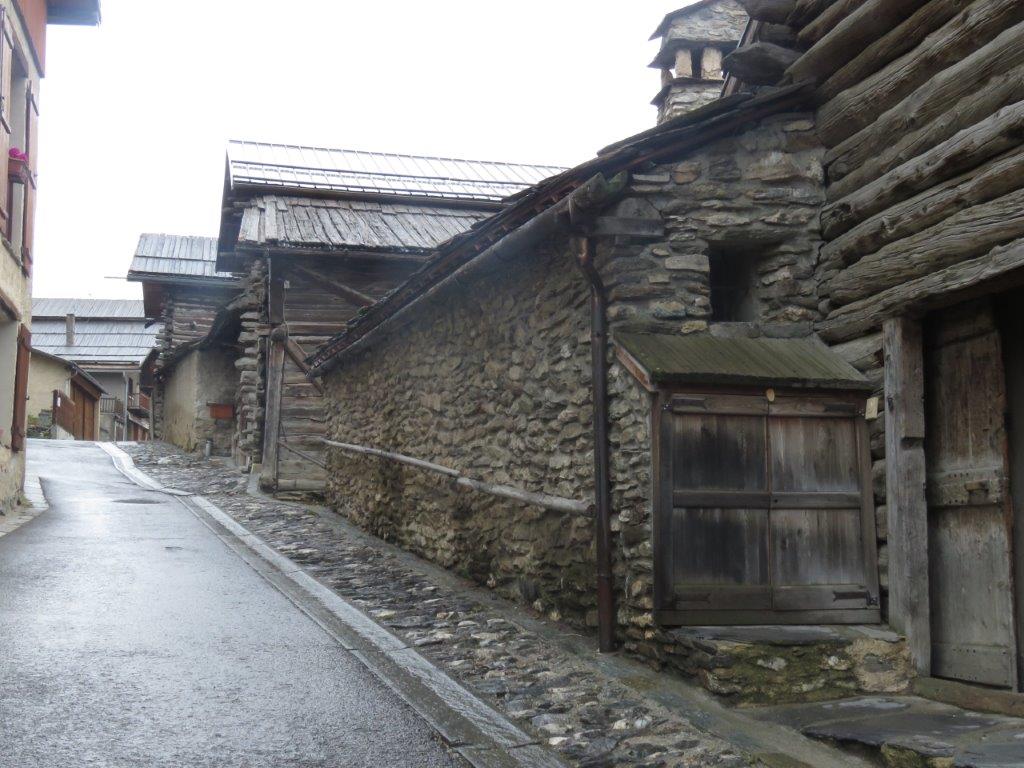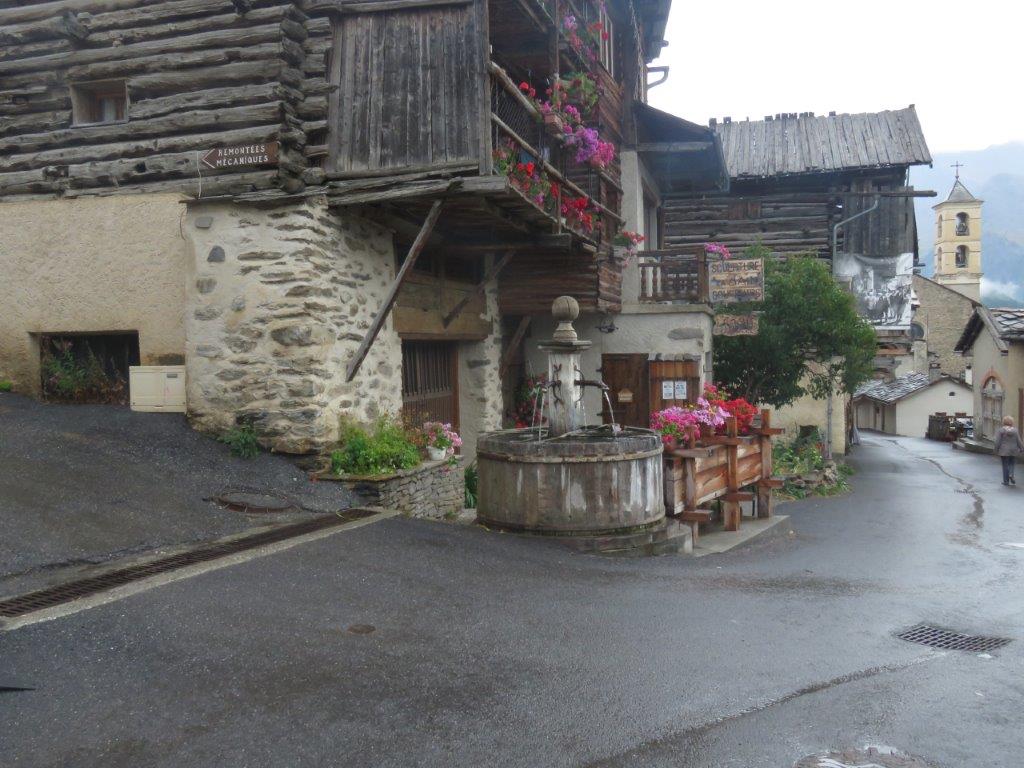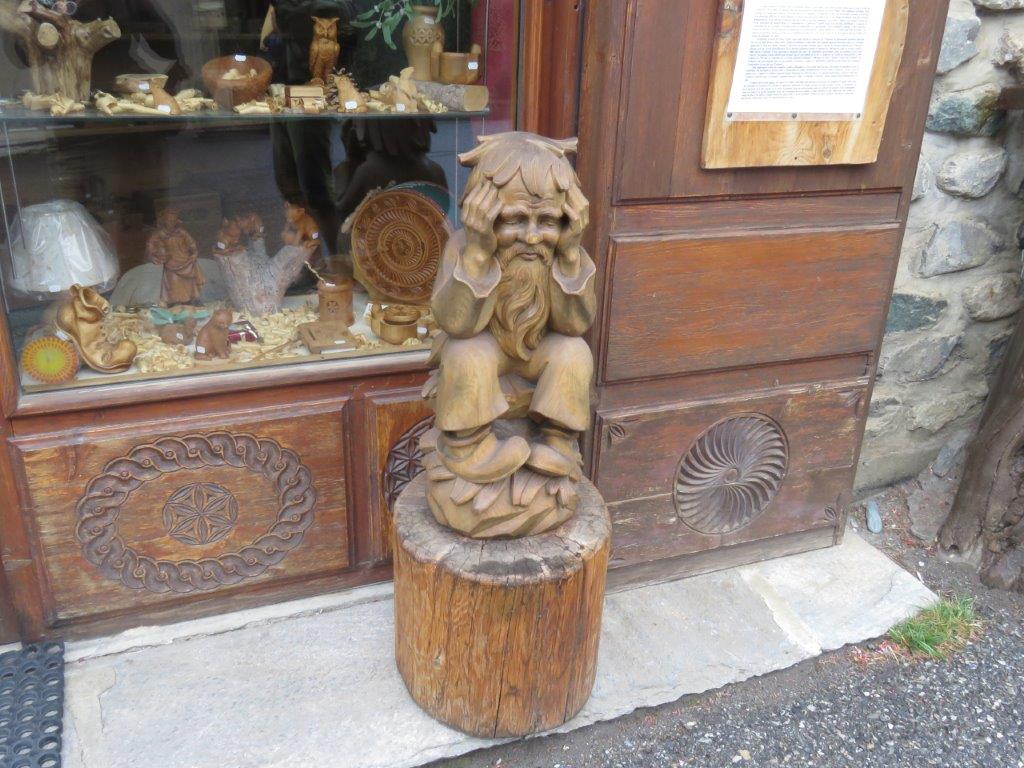Driving to the nearby village Le Roux.
A zig-zag mountain road as you should guess. Leaving the car in a tiny parking lot near the village. Walking the streets of the village and then taking the track that takes us by a couple of old chapels and more or less abandoned villages.
The weather is warm but rain clouds already awaits us up in the mountains. The marmots here around as well – one of them shows up from his cave, whistles and retreats. Another crosses the path a couple of steps away. Still another gazes at us from the top of a stone. Marmot caves all around – must watch carefully to not a break a leg in one.
The first lost village is Pre Roubaud. Not inhabited since 1920. Nevertheless features a pair of renovated houses and a bakery with two large ovens.
Proceeding through a forest of larches and a meadow of marmots we arrive to the second lost village – La Montet. This has a ruins of houses and a renovated church. No one lives here since the end of 19th century. 35 houses accommodated 126 people in 1846, the village had farms, a school, bakery, orchards. It is weird to go through such a lost village and to think about the people who lived here long ago.
We return by another path. Just before Le Roux the rain forced us in a shelter under the vast penthouse of an old chapel.
Next we drive back passing Abries to St. Veran. The village is located 2km above the sea and the French refer to it as a highest village the people eat a bread. Apart from the villages dedicated for mountain skiers St. Veran is the highest in the mountains village in France.
When close to St. Veran it starts to rain and we have to use raincoats to stroll the town. It has nice houses, restaurants, hotels, shops. The town is on the south slope of the hill and has two parallel streets – one above another. The houses have 2-3 stores. Originally the the houses had a stone made base floor and a wood made first floor. The people and cattle used the base floor while the first was used to dry a hay. This was a reason why the houses were repeatedly destroyed by fire. Today the houses of St. Veran have vast wooden balconies on the first floor.
The rain comes to its end while we explore the town. We visit a church which is luxurious.


